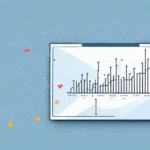Why a Pricing Strategy is Crucial for Your Business
Pricing is one of the most crucial aspects of any business, and developing an effective pricing strategy can be the difference between success and failure. A well-defined pricing strategy impacts every aspect of your business, from product development to marketing and sales, directly influencing your profitability and how customers perceive the value of your products or services. Pricing too high can deter potential customers, while pricing too low can erode profit margins and market credibility.
According to a 2023 Shopify report, businesses with a strategic pricing approach see a 15% higher profit margin on average compared to those without one. Establishing a pricing strategy that aligns with your long-term goals while fostering customer loyalty is therefore critical.
One key benefit of a pricing strategy is maintaining competitiveness in the market. By analyzing your competitors' pricing strategies, you can position your products or services attractively while ensuring profitability, potentially increasing your market share and revenue.
Additionally, a pricing strategy aids in effective inventory management. By setting prices that influence customer purchasing behavior, you can control demand for specific items, avoiding overstocking or understocking issues that can lead to lost sales and decreased profitability.
Understanding Different Pricing Strategies
There are several pricing strategies to consider, each suited to different business objectives and market conditions:
- Cost-Plus Pricing: Adding a markup to the cost of producing a product. This straightforward approach ensures all costs are covered and a consistent profit margin is maintained.
- Value-Based Pricing: Setting prices based on the perceived value to the customer rather than solely on cost. This strategy can command higher prices if customers recognize significant value.
- Dynamic Pricing: Adjusting prices in real-time based on market demand and supply conditions. This is commonly seen in industries like travel and e-commerce.
- Penetration Pricing: Introducing a new product at a low price to attract customers and gain market share, then gradually increasing the price as the product gains popularity.
- Psychological Pricing: Leveraging consumer psychology by setting prices just below a round number (e.g., $9.99 instead of $10) to make products appear more affordable.
Each strategy has its advantages and is suitable for different scenarios. For instance, penetration pricing is effective for new market entrants, while value-based pricing works well for premium products.
Identifying Your Target Market and Their Price Sensitivity
Understanding your target market's price sensitivity is essential in determining the most effective pricing strategy. Price-sensitive customers may respond well to discounts and promotions, whereas others might be willing to pay a premium for high-quality products. Demographics such as age, income, and geographic location can influence price sensitivity.
Conducting market research to gather data on consumer behavior can provide insights into what drives purchasing decisions. For example, a Statista study found that 65% of consumers consider price to be the most critical factor in their purchasing decisions.
Price sensitivity can also vary by product type. Luxury items often allow for higher pricing due to perceived value, whereas everyday necessities might require more competitive pricing. Understanding these nuances helps tailor your pricing strategy to maximize both profitability and customer satisfaction.
Conducting Competitive Analysis for Pricing
A competitive analysis is vital in understanding how your business compares to competitors and determining your optimal pricing position. Evaluate competitors' pricing, value propositions, and product or service quality to identify your unique selling points.
For instance, if your product offers unique features not available from competitors, you can justify a higher price point. Conversely, in a saturated market with little differentiation, competitive pricing may be necessary to attract customers.
Additionally, consider market trends and demand. High demand coupled with low supply allows for higher pricing, whereas a crowded market may require more aggressive pricing strategies to gain market share.
Calculating Costs and Establishing Profit Margins
Understanding all costs associated with production, advertising, and other expenses is fundamental to setting appropriate prices. Your pricing must cover these costs and provide a reasonable profit margin. Calculate the minimum price needed to break even and determine the maximum price point that customers are willing to pay without deterring sales.
Formula: Price = Cost + (Cost × Markup Percentage)
Regularly review and adjust your pricing strategy as your business evolves. This includes reevaluating costs, monitoring market trends, and assessing competitor pricing. Flexibility in your pricing approach ensures sustained profitability and competitiveness.
Pricing Tactics: Promotions, Discounts, and Tiered Pricing
Tiered Pricing: Offering Multiple Options to Customers
Tiered pricing provides customers with multiple product or service options at different price points, catering to various needs and budgets. This approach can attract a broader customer base and enhance customer satisfaction by offering choices that align with their specific requirements.
For example, a software company might offer a basic version for free, a standard version with additional features for a moderate price, and a premium version with advanced functionalities at a higher price. This allows customers to select the option that best fits their needs and budget.
Tiered pricing can also foster customer loyalty by providing clear upgrade paths and personalized options, encouraging continued engagement and repeat business.
Promotions and Discounts: When and How to Use Them
Strategically used promotions and discounts can effectively attract new customers, clear out inventory, and boost sales. However, overuse or inappropriate discounts can harm your brand's reputation and erode profit margins.
Use promotions to achieve specific business goals, such as introducing new products, rewarding loyal customers, or driving sales during slow periods. For example, seasonal discounts or limited-time offers can create urgency and incentivize purchases.
Ensure that promotions align with your overall pricing strategy and brand image. Promotions should enhance perceived value rather than devalue your offerings.
Implementing Dynamic Pricing Strategies
Dynamic pricing involves adjusting prices in real-time based on market demand and supply conditions. This strategy is prevalent in industries like travel, hospitality, and e-commerce.
Pros:
- Increased Revenue: Capitalize on high demand periods by raising prices.
- Inventory Management: Manage supply effectively by adjusting prices based on availability.
Cons:
- Customer Perception: Frequent price changes can confuse or frustrate customers.
- Implementation Complexity: Requires sophisticated algorithms and real-time data analysis.
Carefully assess whether dynamic pricing aligns with your business model and customer expectations before implementation.
Factors to Consider When Adjusting Your Prices
Adjusting prices requires a strategic approach to ensure optimal outcomes. Key factors to consider include:
- Market Demand: Higher demand can justify higher prices, while lower demand may require price reductions.
- Consumer Behavior: Understand how changes in price affect purchasing decisions.
- Competitor Pricing: Stay informed about competitor price changes to remain competitive.
- Production Costs: Ensure that price adjustments cover any changes in production or operational costs.
- External Factors: Consider economic conditions, taxes, and tariffs that may impact pricing.
Regularly collect and analyze customer feedback and market data to inform pricing adjustments and maintain alignment with your business objectives.
Communicating Your Pricing Strategy Effectively to Customers
Effective communication of your pricing strategy builds trust and ensures customers understand the value they receive. Transparency about pricing helps avoid misunderstandings and fosters long-term relationships.
Ensure that pricing information is clear and consistent across all channels, including your website, marketing materials, and customer service interactions. Highlight the benefits and value that justify your pricing to reinforce customer perception of worth.
Avoid complex pricing structures that may confuse customers. Simple, straightforward pricing enhances clarity and customer satisfaction.
Measuring the Success of Your Pricing Strategy Through Metrics and Analytics
Evaluating the effectiveness of your pricing strategy requires ongoing monitoring and analysis. Key metrics to track include:
- Profit Margins: Assess whether your pricing covers costs and achieves desired profit levels.
- Customer Acquisition Cost: Measure the cost of acquiring new customers in relation to pricing strategies.
- Customer Lifetime Value: Evaluate the long-term value generated from customers based on pricing.
- Customer Retention: Monitor how pricing affects customer loyalty and repeat business.
Additionally, analyze the impact of promotions and discounts on overall sales and profitability to refine your pricing tactics continually.
Common Mistakes to Avoid When Developing a Pricing Strategy
Avoid the following common pitfalls when developing your pricing strategy:
- Setting Prices Too High or Too Low: Extreme pricing can either deter customers or erode profit margins.
- Ignoring Customer Behavior and Price Sensitivity: Failing to understand your target market can lead to misaligned pricing.
- Neglecting Competitor Pricing: Overlooking competitor prices can result in losing market share.
- Lack of Regular Pricing Reviews: Not adjusting prices in response to market changes can harm profitability.
Regularly evaluate your pricing strategy and make necessary adjustments to ensure it remains effective and aligned with your business goals.
Developing an effective pricing strategy is an ongoing process that requires careful consideration, research, and analysis. By being strategic and keeping your customers' needs in mind, you can create a pricing strategy that maximizes profitability, builds customer loyalty, and drives long-term success.




















